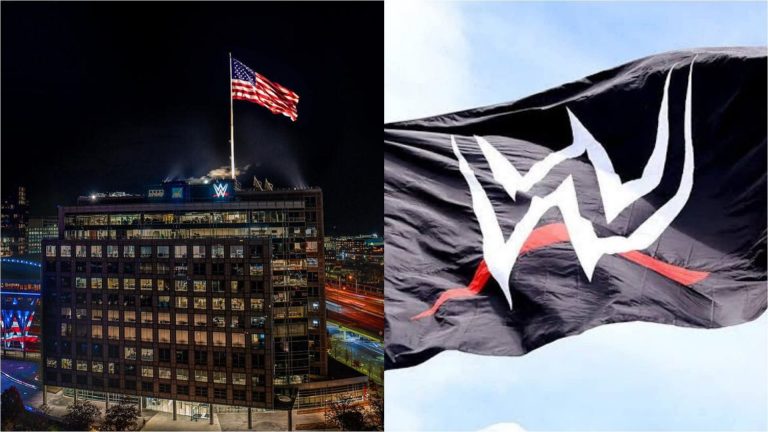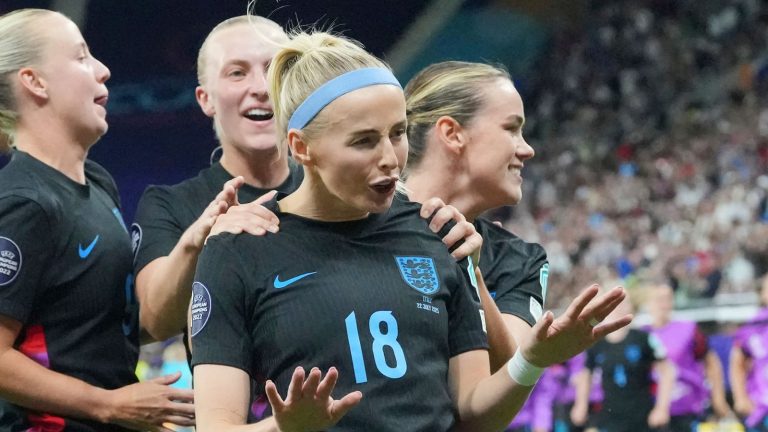This weekend saw the death of actress Loretta Swit, responsible for one of television’s truly iconic characters of the 70’s and 80’s, Margaret ‘Hot Lips’ Houlihan, from the wartime comedy M*A*S*H.
Hot Lips may not have known much about rugby, but she was a key player – along with colleague Major Frank Burns and F1 driver Niki Lauda – in an all-time bad taste joke that has stood the test of time.
Another M*A*S*H character who might have been busy over the weekend was Father John Mulcahy, reading the last rites to the Waratahs, Moana Pasifika and Fijian Drua, as they joined the Western Force and Highlanders in crashing out of Super Rugby Pacific for 2025.
On paper, the Tahs and Pasifika entered the weekend still in contention for a finals spot. On the field, 46-6 and 64-12 thrashings, to the Blues and Hurricanes respectively, told the real tale.
Throw in the 52-7 pasting of the Drua by the Reds, and the final ‘Super Saturday’ was as damp as Suncorp Stadium.
The competition fixture – carefully engineered so as to avoid early season blowout scores – has rightly received widespread praise, but the risk was always going to be those mismatches coming later on. And so it has proved.
Predicting months ahead what might happen in the final round feels like an almost impossible task. Nevertheless, instead of the final day of the regular season reaching a crescendo, it’s fair to say that a lot of the buzz and optimism that was evident around the competition in the early rounds – particularly in Australia – has ebbed away.
Normal order has been restored and the final ladder looks remarkably similar to ladders of years gone past.
Speaking to press in the lead-up to Saturday’s match, Waratahs coach Dan McKellar referenced the desirability of long-term combinations when he said ‘that cohesion theory that Benny Darwin talks about, it’s 100 per cent right’.
Trouble was, the Waratahs headed to Eden Park – a graveyard for Australian rugby at the best of times – with a brand new 9-10-12 combination; the antithesis of cohesion.
And didn’t the Blues know it – conclusively winning the collisions before running through and around the Waratahs’ defensive line in their first free-running backline display of the year.
The biggest individual beneficiary was Rieko Ioane; albeit his hat-trick felt diminished by him confusing Joey Walton with Johnny Sexton, and dishing out what appeared to be an uncharitable and needless verbal spray.
With the score already at record proportions, a half-century loomed large, but Harry Plummer popping over a penalty goal after the siren was both recognition of his long service and a small mercy offering for the visitors.
In Wellington, the Hurricanes jumping out to a 28-7 half-time lead left Moana Pasifika needing to score six unanswered tries in the second half to steal 6th place off the Blues. Unsurprisingly, it was a task that proved well beyond them.
What was interesting about the Hurricanes’ performance was how the spotlight has been on centre Billy Proctor in recent weeks, and how his good form has him back in the frame for the All Blacks; yet it was centre partner Peter Umaga-Jensen who delivered a notably strong performance.
The Hurricanes have a recent win in Canberra under their belt, so they won’t be fazed by having to return there so soon. But they can also expect to find a Brumbies side much more aware and better prepared.
A feature of the Reds under Les Kiss is the way they are able to ‘flick the switch’ and, with increased urgency, play into a numbers mismatch in the backline when offered the opportunity.
It’s reminiscent of a ‘power play’ situation in ice hockey, where sides use plays designed specifically to utilise any extra space when it is offered.
Lachie Anderson was the chief beneficiary, nabbing four tries, and with a trip to Christchurch locked in, and a 31-0 halftime lead, there wasn’t a lot to play for in the second half, the match – and the regular season – petering out 52-7.
The Chiefs also did it easy early on against the Highlanders, up 19-0 after just 14 minutes.
While the home side hung tough and made a genuine contest of it, 41-24 was comfortable enough for the title favourites.
This match saw the resurrection of Tupou Vaa’i and Josh Lord as starting locks, and with the rest of their pack humming along nicely, and home ground advantage at their disposal during the finals, that favouritism looks well justified.
It was no surprise that the match that meant the most in terms of finals positions, between the Brumbies and Crusaders, was also the most intense and hard-fought of the round.
Prop Feao Fotuaika slipped straight into the Alan Alaalatoa try-scoring role, and sharp hands from Rob Valetini created a try for Len Ikitau, but the Brumbies still found themselves trailing 25-14 at the break.
Try scoring record holder Sevu Reece popped over a dropped goal for fun, while the first two Crusaders tries came after taking advantage of 50:22 kicks.
Of all of the recent law variations this one feels like the most influential. Mostly, sides are opting not to defend it, so the opportunity and rewards are there for players who kick with intent and purpose.
Stephen Larkham asked for more physicality from his side in the second half and got it. The Brumbies’ competitiveness at the breakdown improved markedly and with halfback Noah Hotham getting sucked into body contact he isn’t built for, fluidity and polish disappeared from the Crusaders’ game.
The match always had the feel of one act of brilliance or controversy tipping the balance either way, and so it proved late in the piece when, after the Brumbies went ahead 31-28, the Crusaders got one more opportunity on attack.
Assuming that there isn’t a person on the planet who hasn’t seen what happened, here are a few random, but ultimately linked observations;
– Stationed behind a ruck at halfback, Sevu Reece clearly knocked the ball on with his right hand. Yes, the ball might have edged backwards after contact but that’s been a knock-on for 150 years and always will be.
– Referee James Doleman and assistant referee Fraser Hannon were both positioned closer than three metres away. How neither of them picked up the knock-on is perplexing.
– Replacement Brumbies player Lachlan Shaw, off his feet on the edge of the ruck, played at Reece with his left arm and contributed to, or even caused the fumble. Referee Doleman also missed this.
– Stephen Larkham’s sober post-match comments may have been grounded in a requirement for coaches not to explicitly criticise referees, but also recognised how this single decision (or non-decision) did not cost the Brumbies the match.
– Playing on from Reece clearing the ball, the Brumbies still had an opportunity to defend without conceding penalties (Shaw and then Luke Reimer, both off their feet in the ruck, slowing the ball down). They then had an opportunity to defend the resultant 5m lineout. As far as lineout maul tries go, letting George Bell roll around the blindside edge of the maul was a soft concession.
– Protocols prevented TMO Richard Kelly from interjecting. As tough as it may seem for aggrieved fans when a particular call goes against their side, rugby is far the better for not introducing a second referee. However, as evidenced by Kelly jumping in to fix an obvious error in determining a first-half lineout throw, officials are making a rod for their own backs. TMOs intervening on some occasions, but not others, is confusing, inconsistent, and a recipe for even greater consternation and dispute. When is a protocol not a protocol but just a few words to be observed or ignored on a whim?
– How did refereeing of the breakdown evolve into players being granted to licence to play at the ball with their hands until either being rewarded by the referee, or being warned to pull away; only being penalised if they ignore the warning? This practice has contributed to increasingly chaotic, free-for-all breakdowns and slower recycling.
So, what’s actually the solution here? Banish James Doleman and any other referee fans decide they don’t like? Who takes their place?
Let’s not forget that only two weeks ago, Angus Gardner and Ben O’Keeffe – officials more experienced and accomplished than Doleman – got a protocol call wrong, denying a try for Moana Pasifika against the Blues.
In a rare public outing, Super Rugby Pacific issued a statement confirming the error.
It is baffling why Doleman and not any one of four more seasoned and higher-rated referees wasn’t appointed to the most important match of this round, but even the best referees make mistakes.
Or do we simply ‘play it as it lies’ and let fans express their emotion and anger in the heat of the moment, before they gradually come to the realisation that rugby’s complex law book, the subjective nature of its interpretation, and the dynamic, helter-skelter coming together of thirty fallible players, guarantees a mix of favourable and unfavourable decisions, and reinforces how rugby always has been and always will be imperfect?
To matters more serious, and the death of teenager Ryan Satterthwaite in New Zealand last week, following a ‘game’ of ‘RunIt’ or ‘Run It Straight’ with his mates, was as predictable as it was incredibly sad.
Organisers of both ‘official’ competitions were quick to disassociate themselves from this death, citing how their events require competitors to be medically checked before and after collisions.
It is hard to conceive of a feebler and more disingenuous attempt to create a veil of safety for something that is inherently unsafe. At the RunIt event I attended recently in Melbourne, one competitor, after being defeated in the earlier rounds, collapsed in the aisle beside me while watching the final.
A doctor appointed for the event stayed with the finals action and did not attend to him. Other heavily concussed contestants, once they eventually recovered their feet, were simply handed a bag of ice and led away by their partners or handlers.
In any case, whatever happens at these events is only a small part of the story. CTE is known to occur via the accumulation of sub-concussive hits, and with some competitors subjected to 14 high-velocity collisions on the night, it beggars all logic that officially sanctioned events can be considered safer than any impromptu mimicry between mates.
In the wash up, NZ Rugby released a statement which nicely balanced sympathy and deterrence, saying; “We urge people not to take part in Run It Straight games or competitions as they carry significant risk of serious injury.”
“Those wanting to play contact sports should register for a school or club team and learn in a controlled and safe environment how to tackle safely and the art of evasion,” was the message that reverberated around New Zealand’s rugby and school communities last week.
One line of thought suggests that because this so-called sport has nothing to do with rugby, the best course of action is to starve it of oxygen and not legitimise it with any comment.
The fact is however, many of the organisers and contestants come from the rugby communities of Sydney, Melbourne and Brisbane. The audience they are trying to entice comprises of young Pasifika rugby (and rugby league) players. Many mainstream media reports of this death didn’t bother with any subtle differentiation and linked it to rugby anyway.
In an ideal scenario, this was an opportunity for Australian rugby and rugby league to come together to show genuine leadership on head injury and player safety. If rugby league wanted no part of a joint statement, then so be it.
All of the major football codes claim to understand the concussion/CTE issue and believe they are acting with appropriate haste and rigour.
The evidence – matching words with actions – strongly suggests otherwise. In rugby’s case, far too much of the heavy lifting has been left to the international players association.
By failing to follow NZ Rugby’s lead and issuing a similar statement, Rugby Australia has missed an important opportunity to reinforce a critical safety message to a large cohort of rugby players.






